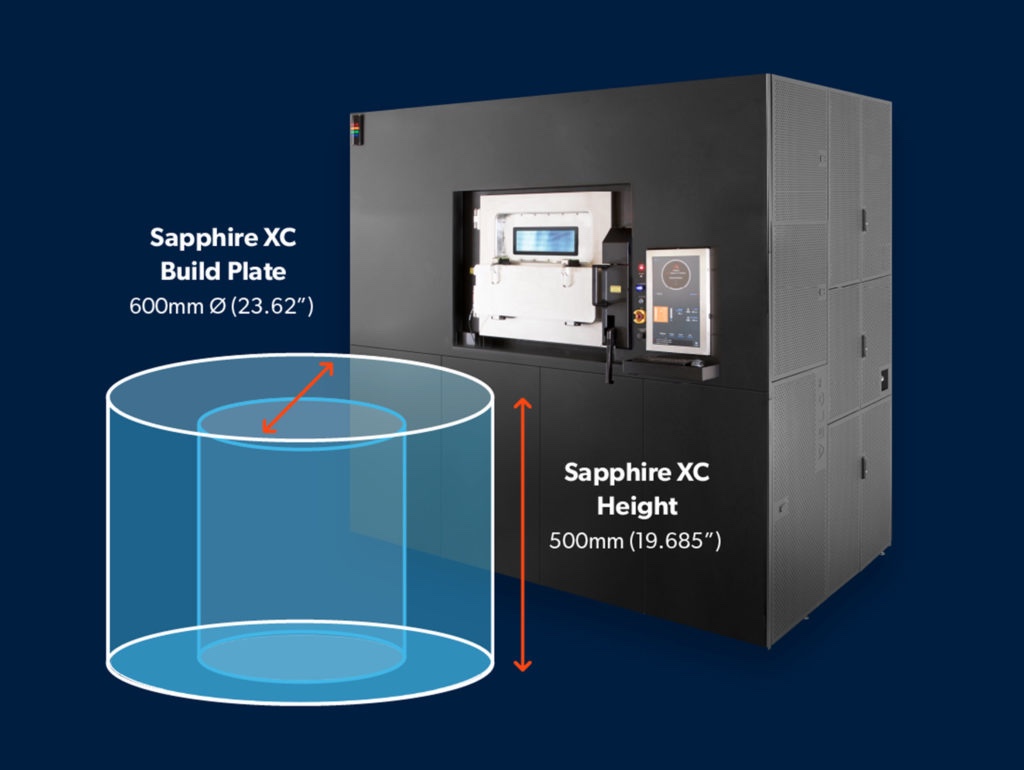Velo3D announced that it has entered into a partnership with Hartech Group, whereby the latter will distribute Velo3D machines to US federal government agencies. The partnership will be particularly focused on providing solutions to the Department of Defense (DoD).
Hartech Group, based in Denver, provides advanced technology equipment solely to the U.S. government. Lockheed Martin Space received Velo3D’s latest machine, the Sapphire XC, this past April, and Raytheon subsidiary Pratt & Whitney is currently evaluating the Sapphire X’s potential for jet engine production. Since Velo3D specializes in additive manufacturing (AM) platforms for two industries most directly reliant on federal contracts — aerospace and space — Hartech’s experience makes it an ideal sales partner for the original equipment manufacturer (OEM).

In a press release, Velo3D’s founder and CEO, Benny Buller, said, “It’s no secret that the federal government can be slow-moving and difficult to navigate for newcomers, but Hartech’s background and capabilities will help us grow our presence with these customers so they can leverage the benefits of advanced [AM]. Director of [AM] at Hartech Group, Gary Bredael, added, “…[W]e know what it takes to not only supply the piece of technology, but also supply everything needed to make the equipment fully operable to the DoD end user.”
As Braedel notes, in addition to providing the equipment, Hartech Group handles installation, training, and customer support services on behalf of its partners. Securing this sort of alliance would seem indispensable, for any company hoping to attract increasing amounts of business from the federal government, and especially the DoD, in the near future.

Additionally, it is currently both a more opportune — as well as a more urgent — moment than it ever has been for a company like Velo3D to solidify its long-term integration into the federal procurement process. That is, a brief window currently seems to have opened in which a select number of standalone AM firms will be able to ensure and enhance their future growth paths by forging ties with the forces controlling the US federal budget. This window is being signaled by broader developments such as the Biden administration’s AM Forward program, as well as individual use-case projects, like the US Navy’s recent successful deployment of Xerox’s ElemX aboard the USS Essex.

It is uncertain, of course, exactly how brief the window will be. But the point is that there is an enormous, yet still limited, amount of government funding that will pour into the industry over the next decade: thus, the companies that establish themselves as government suppliers now will likely be the greatest beneficiaries of that funding when all is said and done.
Stock markets have obviously performed quite poorly in general over the last six months or so, and AM has been as bad as just about any other sector. In turn, until markets are less volatile, it will be difficult to utilize stock performance as a truly reliable metric to gauge the outlook for any company. On the other hand, the possibility that markets may finally be starting to hit a nadir does provide an opportunity to pay attention to which stocks are now considered “discounts” by large investors.
Along these lines, it’s perhaps worth mentioning that Cathie Wood’s ARK Invest purchased an as-yet-undisclosed additional quantity Velo3D two weeks ago. This comes two months after the fund bought 419,575 shares of Velo3D: which made for a total of 10.6 million shares owned by ARK, or a little over five percent, as of May, 2022.
Whether or not Cathie Wood’s endorsement is still a plus is up for debate. Nevertheless, if anyone could be expected to outpace any upcoming rebound of the general market (should that eventually happen), it’s probably Wood. With that in mind, the momentary ups-and-downs of the market are generally more related to sector performance than they are to the performance of individual companies. Thus, we can view this (along with other recent developments) as a potential sign that the elusive rebound of the market and that of the AM sector will happen within similar timeframes. Among other things, this means it’s not unreasonable to think that AM will outperform the next sustained market rally.
Images courtesy of Velo3D
Subscribe to Our Email Newsletter
Stay up-to-date on all the latest news from the 3D printing industry and receive information and offers from third party vendors.
You May Also Like
Precision at the Microscale: UK Researchers Advance Medical Devices with BMF’s 3D Printing Tech
University of Nottingham researchers are using Boston Micro Fabrication‘s (BMF) 3D printing technology to develop medical devices that improve compatibility with human tissue. Funded by a UK grant, this project...
3D Printing Webinar and Event Roundup: April 21, 2024
It’s another busy week of webinars and events, starting with Hannover Messe in Germany and continuing with Metalcasting Congress, Chinaplas, TechBlick’s Innovation Festival, and more. Stratasys continues its advanced training...
3D Printing Webinar and Event Roundup: March 17, 2024
It’s another busy week of webinars and events, including SALMED 2024 and AM Forum in Berlin. Stratasys continues its in-person training and is offering two webinars, ASTM is holding a...
3D Printed Micro Antenna is 15% Smaller and 6X Lighter
Horizon Microtechnologies has achieved success in creating a high-frequency D-Band horn antenna through micro 3D printing. However, this achievement did not rely solely on 3D printing; it involved a combination...





























